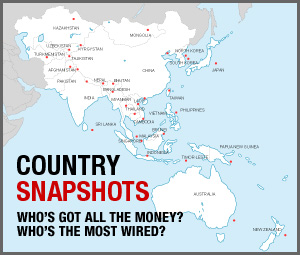APAC—Top 10 Stories of Decade
9. The LDP Falls in JapanAugust 30, 2009
The two main protagonists of the Japanese general elections of 2009 were the incumbent Prime Minister Taro Aso and his main challenger, Yukio Hatoyama. They were contesting an election that was in some ways a referendum on a political system created in part by their respective grandfathers in the 1950s. That fact tells you pretty much everything you need to know about Japanese politics in the interim. Ossified does not begin to describe a system that in recent years threw up a series of smug and incompetent premiers presiding over two decades of economic decline. The deeply conservative Japanese public was astonishingly forgiving of the failings of the ruling Liberal Democratic Party, which drew on the ever-diminishing goodwill it earned for steering Japan’s unprecedented economic rise in the four decades following near destruction in World War II.
But by 2009, as the country flirted with industrial output and stock price levels not seen in a quarter of a century and with a particularly gaffe-prone and unpopular politician in power, Japanese had had enough. On August 30, the LDP was handed a drubbing and Hatoyama’s Democratic Party of Japan led a coalition to an historic victory. The outcome was almost entirely the work of Ichiro Ozawa, a one-time LDP power broker who for nearly two decades had been fighting to fulfil his pledge to overturn the political status quo. Denied the premiership because of a funds scandal (and always more comfortable operating behind the scenes) Ozawa is nonetheless the seminal figure in recent Japanese politics. Japan still matters on the global stage–even after two decades of stagnation, it remained the Asia-Pacific’s largest economy in 2009, and it’s showing a growing confidence in regional security matters. But the country needs radical surgery to avoid terminal decline. Holding its leaders accountable in elections like those seen this year would seem a good first step.











